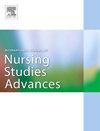护士压力和应对策略的代际差异与感知患者安全:一项横断面研究
IF 3.1
Q1 NURSING
International Journal of Nursing Studies Advances
Pub Date : 2025-07-23
DOI:10.1016/j.ijnsa.2025.100385
引用次数: 0
摘要
由X、Y和Z世代组成的多代护理团队由于对压力和应对机制的不同认知而面临着独特的挑战。认识到这些代际差异对于加强协作和改善患者预后至关重要。目的探讨不同代护士在压力水平和应对策略方面的代际差异及其对患者安全的影响。其目的是提供有助于优化多代团队动态的见解。参与者:该研究涉及692名波兰的注册护士,他们出生在X世代(1965-1980年)、Y世代(1981-1996年)或Z世代(1997年及以后),所有人都在不同的医疗机构工作。背景与方法采用多维护理代际问卷、应激感知量表和问题应对倾向经验量表进行数据收集。分析采用方差分析和通径分析来检验压力水平、应对策略和代际关系之间的关系。结果显著的代际差异显现出来,Z一代表现出最高的压力水平,并倾向于积极应对,特别是寻求支持。这与他们对病人安全的看法正相关。相反,X一代护士更依赖于回避行为,这与对患者安全的看法较差有关。代际差异缓和了压力应对动态,表明有针对性的干预可能改善团队团结和患者护理。结论:我们强调了在波兰护理团队中可能需要对代际敏感的方法。我们认为,代际关系可能会影响护士如何体验压力,选择应对策略,并形成对患者安全的看法。这些差异突出了在支持护士福祉和团队协作的努力中考虑代际动态的潜在重要性。本文章由计算机程序翻译,如有差异,请以英文原文为准。
Generational differences in nurse stress and coping strategies in relation to perceived patient safety: A cross-sectional study
Background
Multigenerational nursing teams, composed of Generations X, Y, and Z, face distinctive challenges due to differing perceptions of stress and coping mechanisms. Recognizing these generational variances is crucial for enhancing collaboration and improving patient outcomes.
Objectives
We investigated intergenerational differences in stress levels and coping strategies and their impact on patient safety among nurses from different generations. The aim was to provide insights that could help optimize the dynamics of multigenerational teams.
Participants
The study involved 692 registered nurses in Poland who were born in Generation X (1965–1980), Generation Y (1981–1996), or Generation Z (1997 and later), all of whom were employed in diverse healthcare settings.
Setting and methods
Data were collected using the Multidimensional Nursing Generational Questionnaire, Perceived Stress Scale, and Brief Coping Orientation to Problems Experienced Inventory questionnaire. The analyses involved analysis of variance and path analysis to inspect the relationships among stress levels, coping strategies, and generational affiliation.
Results
Significant generational differences surfaced, with Generation Z displaying the highest stress levels and a propensity for active coping, notably seeking support. This was positively correlated with their view of patient safety. Conversely, Generation X nurses exhibited a greater reliance on avoidance behaviors, correlating with poorer views of patient safety. The differences among generations moderated the stress-coping dynamics, suggesting that targeted interventions might improve team unity and patient care.
Conclusions
We have underlined the possible need for generationally-sensitive approaches in Polish nursing teams. We suggest that generational affiliation may shape how nurses experience stress, select coping strategies, and form views of patient safety. These differences highlight the potential importance of considering generational dynamics in efforts to support nurse well-being and team collaboration.
求助全文
通过发布文献求助,成功后即可免费获取论文全文。
去求助
来源期刊

International Journal of Nursing Studies Advances
Nursing-General Nursing
CiteScore
5.80
自引率
0.00%
发文量
45
审稿时长
81 days
 求助内容:
求助内容: 应助结果提醒方式:
应助结果提醒方式:


